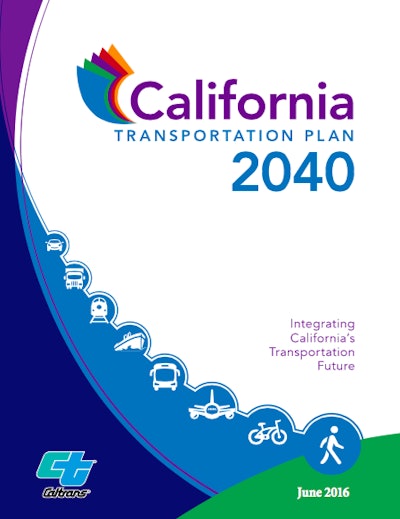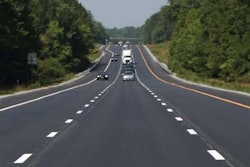
“The California Transportation Plan 2040 sets the correct course for the state’s transportation future,” says Caltrans Director Malcolm Dougherty. “With a growing population that requires an integrated, effective transportation system, the Plan will improve transit options while fulfilling economic and environmental goals.”
The six goals of the CTP 2040 include:
- Improve multimodal mobility and accessibility for all people
- Preserve the multimodal transportation system
- Support a vibrant economy
- Improve public safety and security
- Foster livable and healthy communities and promote social equity
- Practice environmental stewardship
Caltrans is also including in the following “implementation highlights” that illustrate the “vision and direction” the CTP 2040 offers over the next 25 years.
- Improve transit by completing the entire California High-Speed Rail Authority (Authority) Business Plan Phase 1 High-Speed Rail System by 2029, and making it the backbone of an integrated statewide transit system linking all transit operators with one-stop ticketing and well-coordinated transfers.
- Reduce long-run repair and maintenance costs by using “fix-it first,” smart asset management, and life-cycle costing, to maintain our transportation infrastructure in good condition – this should include developing a comprehensive assessment of climate-related vulnerabilities, and actions to ensure system resiliency and adaptation to extreme events.
- Improve highways and roads by using management systems and technologies to maximize system efficiency through integrated multimodal corridor management (intelligent transportation system [ITS], high-occupancy toll [HOT] lanes, and bus rapid transit [BRT] lanes, which are managed in coordination with active transportation and rail lines) and through new technologies and services including autonomous and connected vehicles, smart parking, vehicle- to-vehicle (V2V) communications, infrastructure-to-vehicle (V2I) communication, and vehicle sharing and ride-sharing services.
- Improve freight efficiency and the economy by completing the California Sustainable Freight Action Plan outlined in Executive Order (EO) B-32-15; and through creation of dedicated federal and state freight funding programs to invest in California’s primary trade corridor including multimodal last mile connections to major freight facilities including ports and hubs.
- Improve communities through the region-led Sustainable Communities Strategies (SCSs), which will be updated as the state moves toward 2030 and 2050 greenhouse gas (GHG) reduction targets – the state can continue to partner with regions through the investment of Greenhouse Gas Reduction Funds (GGRF) and other measures such as better use of highway corridors for recreation and to reconnect communities.
- Reduce transportation-system deaths and injuries through multi-agency coordination that implements the Toward Zero Deaths (TZD) vision, and public engagement to reduce distracted driving, impaired driving, and unsafe work-zone driving.
- Expand the use and safety of bike and pedestrian facilities by utilizing the Active Transportation Program (ATP) to support a broad range of investments that go beyond individual projects to encourage corridor-wide and city-wide strategies, and also through improved state and local implementation of Complete Streets strategies that will increase active transportation for short trips, first/last mile transit trips, and school trips.
- Make our vehicles and transportation fuels cleaner through incentives and regulations to increase zero-emission vehicles (ZEVs) and other methods outlined in the California Air Resources Board’s (ARB’s) Assembly Bill (AB) 32 Scoping Plan.
- Improve public health and achieve climate and other environmental goals through the strategies above and also through implementation of robust advanced mitigation to streamline transportation projects and maximize the biological benefit.
- Secure permanent, stable, and sufficient transportation revenue from transportation users to achieve the state of good repair, freight efficiency, and other investments outlined in this plan.
The California Transportation Plan 2040 is available at www.californiatransportationplan2040.org.








